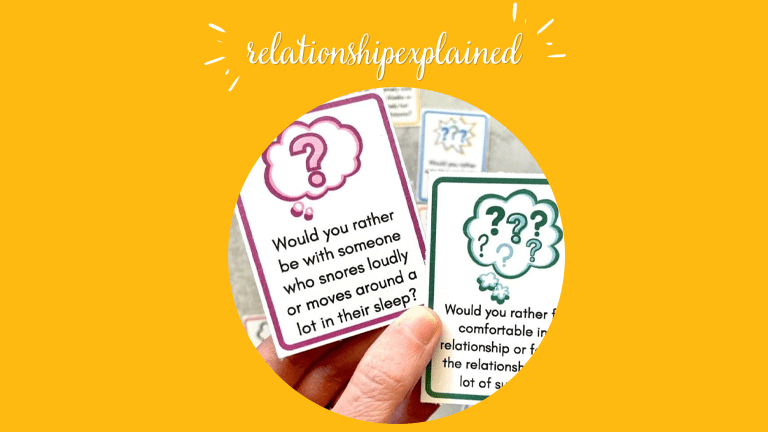Benefits of Cuddling
Cuddling, a seemingly simple act of holding someone close, is more than just a way to express affection. It's a powerful tool that can enhance your well-being in numerous ways, from improving emotional connections to offering significant health benefits. Well, we'll be going over: Let's dive in. The Science of Cuddling Cuddling is an intimate, […]
Cuddling, a seemingly simple act of holding someone close, is more than just a way to express affection.
It's a powerful tool that can enhance your well-being in numerous ways, from improving emotional connections to offering significant health benefits.
Well, we'll be going over:
- The fascinating science behind cuddling and how it affects our hormonal responses.
- The multitude of physical health advantages that come from regular cuddling sessions.
- The profound impact cuddling can have on mental and emotional wellness.
- The role cuddling plays in deepening relationships and intimacy between partners.
Let's dive in.
The Science of Cuddling
Cuddling is an intimate, physical, and loving contact that involves some degree of touching, holding, or embracing. It is a behavior that is common among humans and other animals and has been shown to have several benefits. In this section, we will explore the science behind cuddling and the benefits that it can provide.
Hormonal Response
Cuddling has been found to release a hormone called oxytocin, also known as the love hormone. Oxytocin is a hormone that is produced by the hypothalamus and released by the pituitary gland. It is associated with social bonding, trust, and love. When you cuddle with someone, your body releases oxytocin, which can help you feel more connected to the person you are cuddling with.
Cuddling can also reduce the levels of cortisol, a hormone associated with stress and anxiety. Cortisol is released in response to stress and can have negative effects on the body if it is present in high levels for extended periods. When you cuddle, your body releases oxytocin, which can help reduce the levels of cortisol in your body.
Neurological Benefits
Cuddling has been shown to have several neurological benefits. When you cuddle with someone, your body releases dopamine and serotonin, two neurotransmitters that are associated with pleasure and happiness. These neurotransmitters can help reduce feelings of anxiety and depression and can improve your overall mood.
Cuddling can also help improve your sleep quality. When you cuddle with someone, your body releases oxytocin, which can help you feel more relaxed and calm. This can make it easier for you to fall asleep and can improve the quality of your sleep.
In conclusion, cuddling has several benefits, including releasing oxytocin, reducing cortisol levels, improving mood, and improving sleep quality. So, go ahead and cuddle with someone you love, and enjoy the many benefits that it can provide.
Physical Health Advantages
Cuddling not only feels good but also has several physical health benefits. Here are some of the benefits you can enjoy by cuddling with your partner:
Cardiovascular Health
Cuddling can have a positive impact on your cardiovascular health. Research has shown that cuddling can lower blood pressure and heart rate, which can reduce the risk of heart disease. When you cuddle, your body releases oxytocin, a hormone that helps to reduce stress and anxiety. This can also contribute to better cardiovascular health.
Pain Management
Cuddling can also help to manage pain. When you cuddle, your body releases endorphins, which are natural painkillers. This can help to alleviate pain and discomfort, particularly for those with chronic pain conditions.
Immune System Boost
Cuddling can also boost your immune system. When you cuddle, your body releases cytokines, which are proteins that help to fight off infection and inflammation. This can help to keep you healthy and reduce your risk of getting sick.
Overall, cuddling has several physical health benefits, including improving cardiovascular health, managing pain, and boosting your immune system. So, the next time you're feeling stressed or in pain, consider cuddling with your partner for some natural relief.
Mental and Emotional Wellness
Cuddling is not just a physical act but also has a significant impact on your mental and emotional well-being. It can help reduce stress, improve your mental health, and strengthen emotional bonding.
Stress Reduction
When you cuddle, your body releases oxytocin, a hormone that promotes relaxation and reduces stress. According to a study published in the journal Psychosomatic Medicine, cuddling can help reduce blood pressure and heart rate, which are both indicators of stress.
Emotional Bonding
Cuddling can also help strengthen emotional bonding between partners. When you cuddle, your brain releases dopamine, a neurotransmitter that helps regulate emotions. This can help improve relationship satisfaction and social support.
Mental Health Improvement
Cuddling can also improve your mental health. According to a study published in the journal BMC Psychiatry, cuddling can help reduce symptoms of anxiety and depression. This is because cuddling releases endorphins, which are natural painkillers and mood boosters.
In summary, cuddling has numerous benefits for your mental and emotional well-being. It can help reduce stress, strengthen emotional bonding, and improve your mental health. So, go ahead and cuddle up with your loved ones to reap these benefits.
Relationships and Intimacy
Strengthening Bonds
Cuddling is a great way to strengthen the bond between you and your partner. It helps create a sense of closeness and intimacy that can be difficult to achieve through other means. When you cuddle, your bodies are close together, and you can feel each other's warmth and heartbeat. This physical connection can help you feel more emotionally connected as well.
Intimacy and Affection
Cuddling is also a great way to show affection and intimacy with your partner. It is a non-sexual way to show your partner that you care about them and want to be close to them. When you cuddle, you can hold hands, stroke each other's hair, and whisper sweet nothings in each other's ears. This level of intimacy can help you feel more connected and in tune with your partner's needs.
Sexual Satisfaction
Cuddling can also lead to increased sexual satisfaction. When you cuddle, your bodies release oxytocin, which is sometimes called the "love hormone." Oxytocin can help you feel more relaxed and connected with your partner, which can make sex more enjoyable. Additionally, cuddling can help you feel more comfortable and relaxed with your partner, which can lead to increased sexual desire and satisfaction.
In summary, cuddling is a great way to strengthen the bond between you and your partner, show affection and intimacy, and increase sexual satisfaction. So, the next time you and your partner are cuddling, take a moment to appreciate the many benefits that come with this simple act of love and connection.
Cuddling Techniques and Considerations
Cuddling is a great way to bond with your partner or loved one. However, there are some techniques and considerations you should keep in mind to make the experience more enjoyable and comfortable for both parties.
Cuddling Positions
There are various cuddling positions you can try, including spooning, facing each other, and back-to-back. Spooning is a popular cuddling position where one partner lies on their side facing away from the other, while the other partner curves their body around them from behind. This position is great for feeling close and secure with your partner.
Another cuddling position is facing each other, where partners lie on their sides facing each other and wrap their arms around each other. This position is great for making eye contact and feeling intimate with your partner.
Back-to-back cuddling is another option where partners lie on their sides with their backs touching. This position is great for those who want to feel close to their partner while still maintaining their personal space.
Professional Cuddling
If you are looking for a more structured cuddling experience, you may want to consider professional cuddling. Professional cuddlers are trained to provide a safe and comfortable space for clients to cuddle and feel more connected with others.
Professional cuddling sessions usually take place in a private setting and can last anywhere from 30 minutes to several hours. During the session, the cuddler will guide you through different cuddling positions and techniques to help you feel more relaxed and comfortable.
Before booking a professional cuddling session, make sure to do your research and find a reputable cuddling service. It's important to ensure that the cuddler has proper training and experience to provide a safe and comfortable experience.
Overall, cuddling can be a great way to feel more connected with your partner or loved one. By trying out different cuddling positions and considering professional cuddling, you can make the experience even more enjoyable and fulfilling.
Special Considerations
When it comes to cuddling, there are some special considerations you should keep in mind. In this section, we will discuss two of these considerations: cuddling with pets and cuddling for different age groups.
Cuddling with Pets
Cuddling with pets can be a wonderful experience. Not only does it provide you with the benefits of human touch, but it can also help you bond with your furry friend. However, it is important to keep in mind that not all pets enjoy cuddling. Some pets may become anxious or aggressive when they are held too tightly or for too long. If you are unsure whether your pet enjoys cuddling, it is best to start slowly and pay attention to their body language. If they seem uncomfortable, it is best to give them some space.
In addition, it is important to practice safe cuddling with pets. Make sure that you are holding them securely and that they are not in danger of falling or getting hurt. Also, be aware of any allergies you or your pet may have. If you are allergic to pet dander, for example, you may want to avoid cuddling with your pet.
Cuddling for Different Age Groups
Cuddling can be beneficial for people of all ages, but it is important to keep in mind that different age groups may have different needs and preferences. For example, young children may enjoy being held tightly and swaddled, while older children may prefer a looser embrace. Similarly, elderly individuals may have physical limitations that make certain positions uncomfortable or difficult.
It is important to pay attention to the needs and preferences of the person you are cuddling with. If they seem uncomfortable or in pain, it is best to adjust your position or technique. Additionally, it is important to practice safe cuddling with children. Make sure that they are not in danger of suffocation or falling, and always supervise them closely.
Overall, cuddling can be a wonderful way to connect with others and experience the benefits of human touch. By keeping these special considerations in mind, you can ensure that your cuddling experiences are safe and enjoyable for everyone involved.
Frequently Asked Questions
What are the psychological effects of cuddling on emotional well-being?
Cuddling has been shown to have a positive impact on emotional well-being. It can reduce levels of stress and anxiety, increase feelings of happiness and contentment, and improve overall mood. This is because cuddling releases oxytocin, a hormone that is associated with feelings of bonding and closeness.
How does cuddling contribute to physical health in a relationship?
Cuddling can have physical health benefits for individuals in a relationship. It can lower blood pressure, reduce inflammation, and boost the immune system. Additionally, regular physical touch through cuddling can increase feelings of intimacy and connection between partners.
What are the benefits of cuddling for a child's development?
Cuddling is an important part of a child's development. It can help them feel secure, safe, and loved. Cuddling can also improve the parent-child bond and promote healthy emotional development. Children who receive regular physical touch through cuddling are more likely to have positive self-esteem and emotional regulation skills.
Can engaging in regular cuddling improve sleep quality?
Yes, engaging in regular cuddling can improve sleep quality. Cuddling can help reduce feelings of stress and anxiety, which can interfere with sleep. Additionally, cuddling releases hormones such as oxytocin and serotonin, which can promote feelings of relaxation and calmness.
Why does physical closeness through cuddling evoke feelings of happiness?
Physical closeness through cuddling can evoke feelings of happiness because it releases hormones such as oxytocin and dopamine, which are associated with feelings of pleasure and happiness. Additionally, cuddling can promote feelings of safety, comfort, and security, which can contribute to overall feelings of happiness and contentment.
What distinguishes cuddling from snuggling in terms of physical intimacy?
Cuddling and snuggling are both forms of physical intimacy, but they differ in terms of the level of physical contact involved. Cuddling typically involves more full-body contact, while snuggling involves more partial contact, such as holding hands or resting heads on shoulders. Both forms of physical intimacy can promote feelings of closeness and connection between partners.












